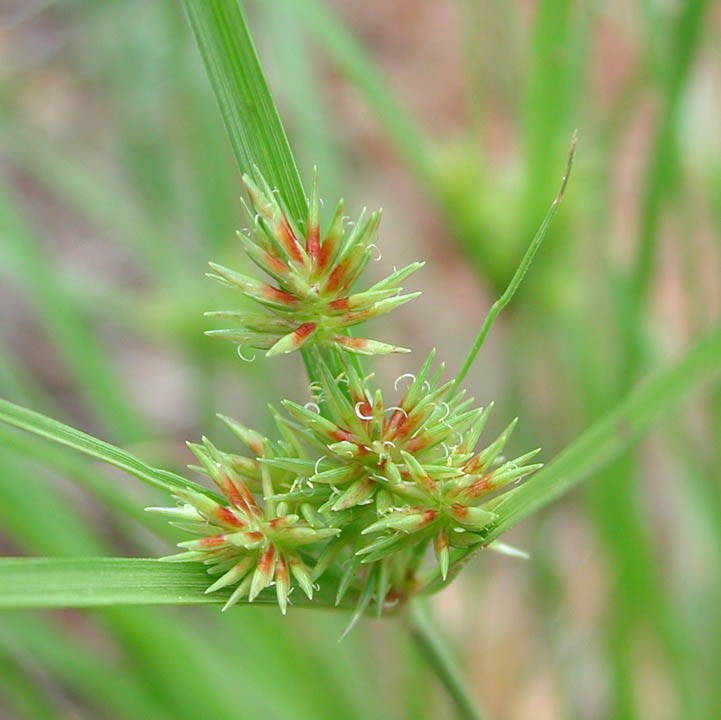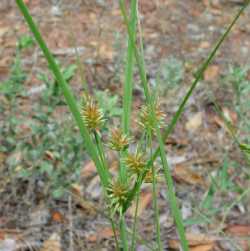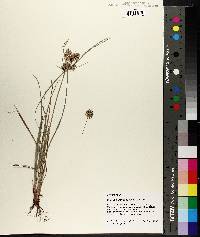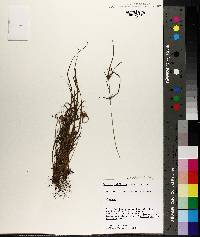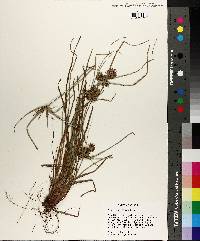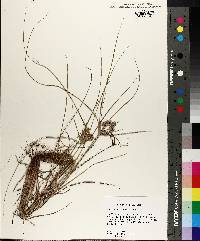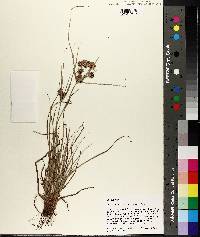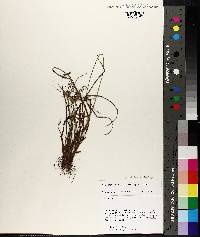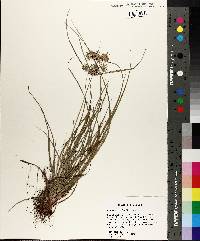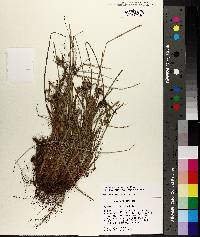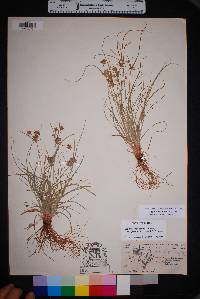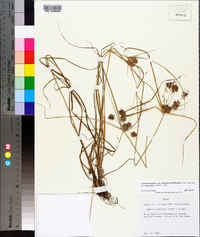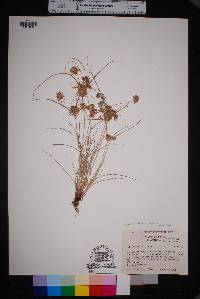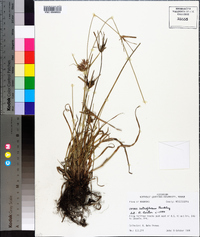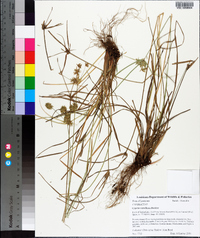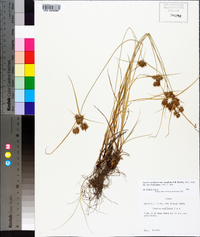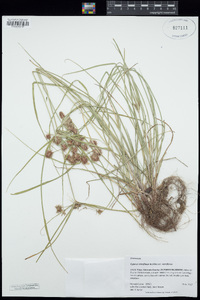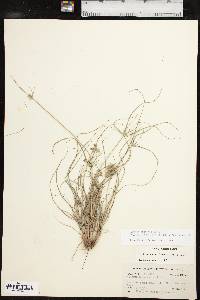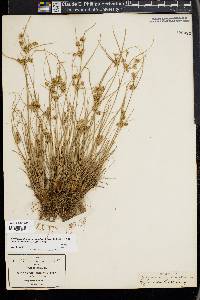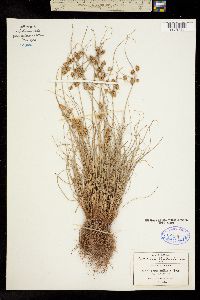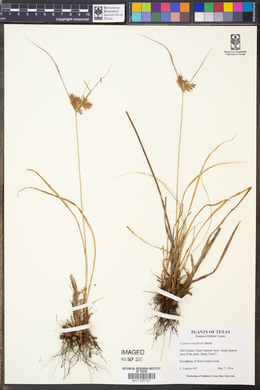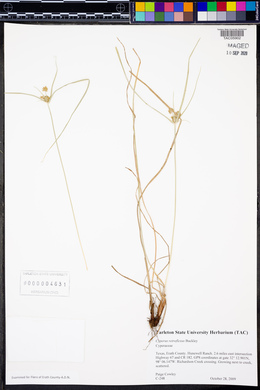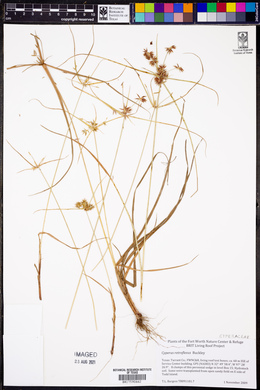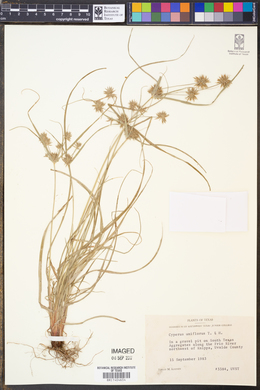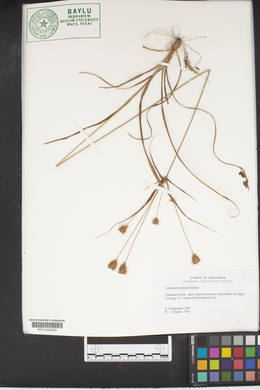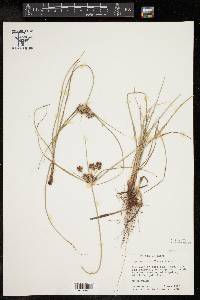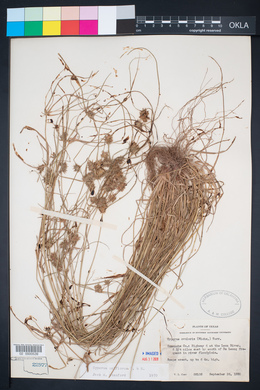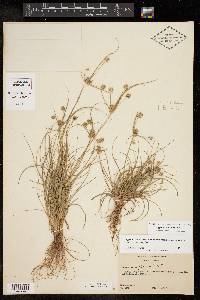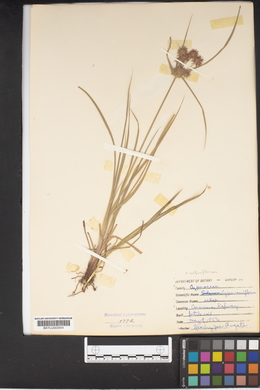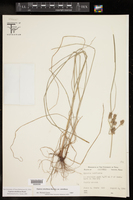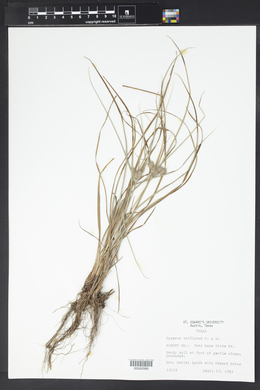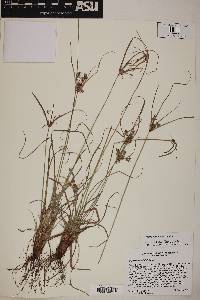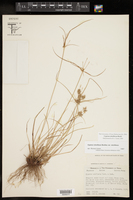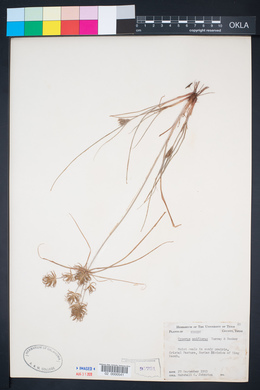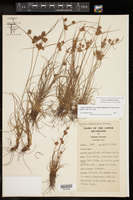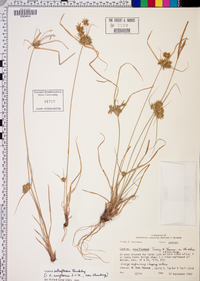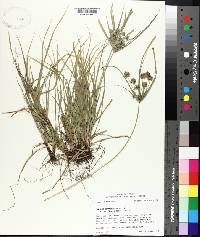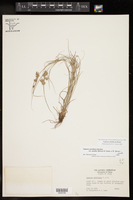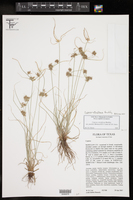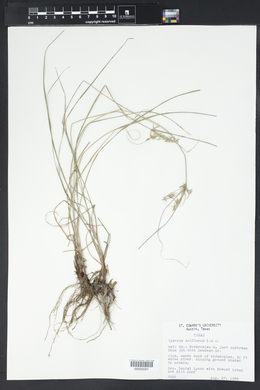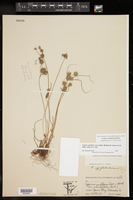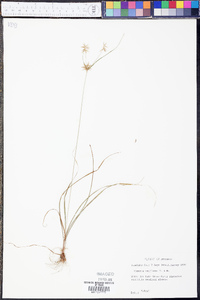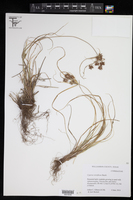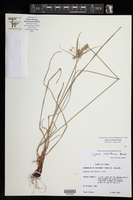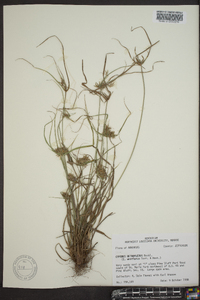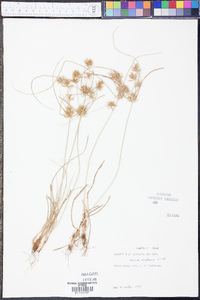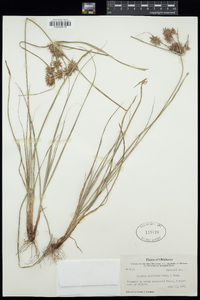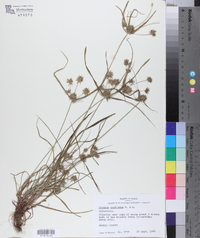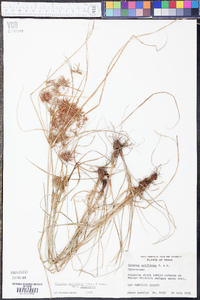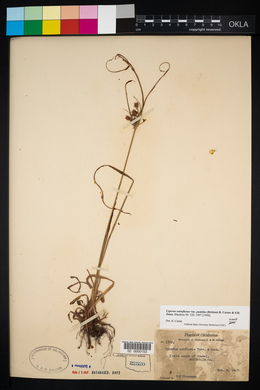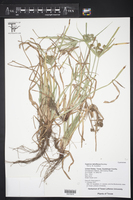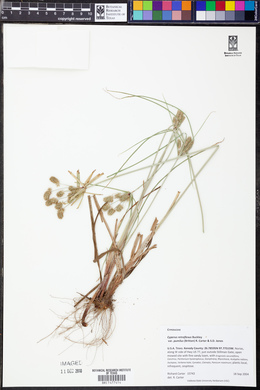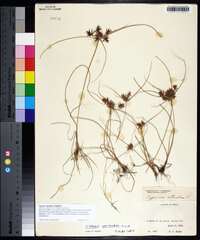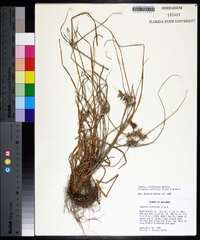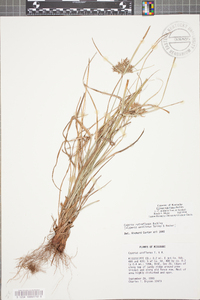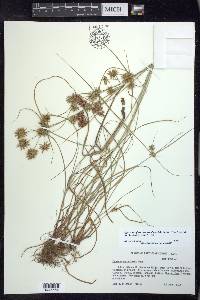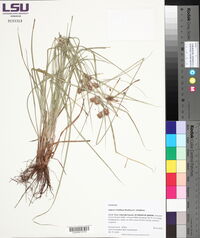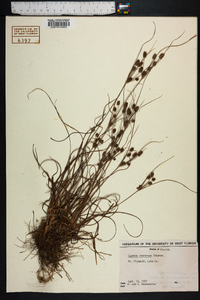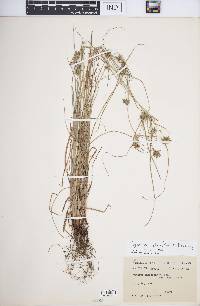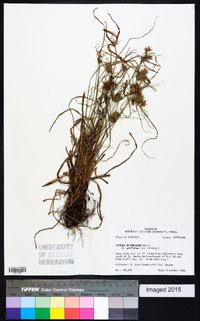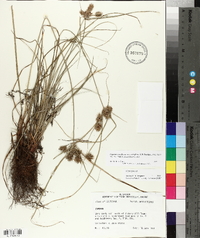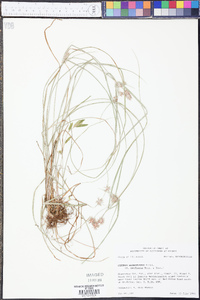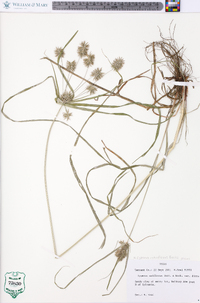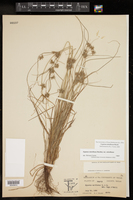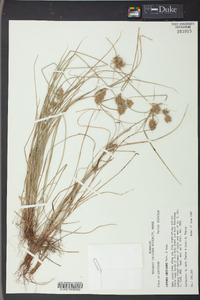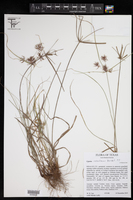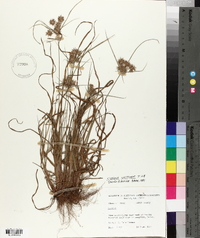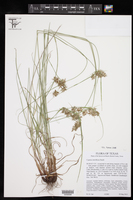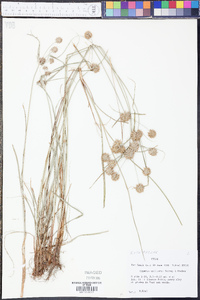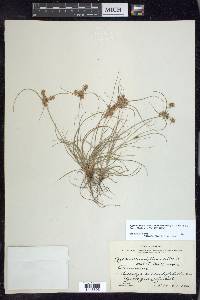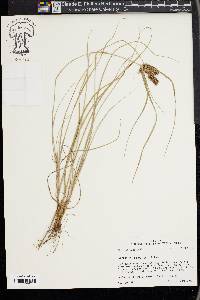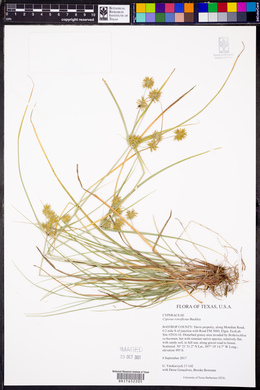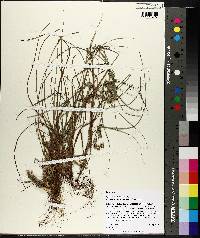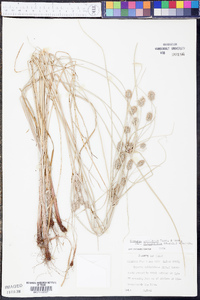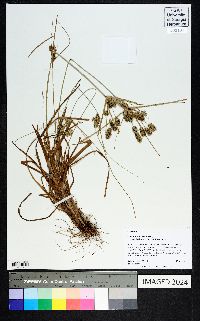
|
|
|
|
Family: Cyperaceae
One-Flower Flat Sedge, more...oneflower flatsedge, one-flower flatsedge
[Cyperus uniflorus Torr. & Hook., non Thunb., moreCyperus uniflorus var. pseudothyrsiflorus Kükenth., Cyperus uniflorus var. retroflexus (Buckley) Kük., Cyperus uniflorus var. uniflorus] |
Herbs, perennial, cespitose, rhizomatous. Culms trigonous, basally tuberous-thickened, (5-)15-40(-80) cm × 1-2.5 mm, glabrous. Leaves flat to V-shaped, (5-)10-30(-60) cm × (0.5-)1-3(-4) mm. Inflorescences: spike 1, loosely to densely ovoid to cylindric, 8-36 × 8-20 mm; rays 3-6(-9), (5-)10-32 cm; bracts 3-6, horizontal to ascending at 30°, V-shaped, (1-)3-15(-30) cm × 0.5-4.5 mm; rachilla deciduous, wings 0.5-0.7 mm wide. Spikelets (5-)20-35(-65), linear to oblong (without narrowed basal portion), quadrangular; (2.2-)4-10(-18) × 0.7-1.1 mm; floral scales persistent, 1-5, appressed, pale greenish white laterally, stramineous with reddish dots, or deep red, greenish or light brown medially, 3-6-ribbed laterally, narrowly ovate to oblong-elliptic, 2.6-3.9 × 1.6-2 mm, apex rounded to ± acute, entire, mucronulate; distal scale with glabrous midrib and mucro 0.1-0.3(-0.5) mm; sterile terminal scale of spikelet only 0.4-0.6 mm wide, involute, frequently uncinate. Flowers: anthers (0.3-)0.4-0.6 mm; styles 0.4-0.5 mm; stigmas 0.5-0.9 mm. Achenes light brown to reddish brown, sessile or slightly stipitate, ellipsoid, (1.8-)2-2.4 × 0.6-0.8(-0.9) mm, apex slightly apiculate, surfaces puncticulate. Fruiting mid summer-early fall (Jul-Sep). Damp, disturbed soils, croplands; 0-1000 m; Ala., Ariz., Ark., Miss., Mo., N.Mex., Okla., Tex.; Mexico. Cyperus retroflexus is distinguished from other species of Cyperus with deciduous spikelets by the involute, sterile terminal scale of the spikelet. In plants with cuspidate scales, the terminal scale is usually somewhat recurved, giving the appearance of a hook at the end of the spikelet.
Tucker 1994, FNA 2002, Martin and Hutchins 1980 Common Name: oneflower flatsedge Duration: Perennial Nativity: Native Lifeform: Graminoid General: Rhizomatous tufted perennial with rhizomes 0.5-2.5 cm long, 3-8 mm in diameter, hardened, stems 15-40 cm tall, 1-2.5 mm in diameter, three sided, smooth, thickened basally. Vegetative: Leaves 3-10, 0-30 cm long, 1-3 mm wide, flat to v-shaped, margins and keel rough to the touch. Inflorescence: Subtending bract 3-6, 3-15 cm long, 0.5-4.5 mm wide, v-shaped, margins and keel rough to the touch, horizontal to slightly ascendent, rays 3-6, 10-32 cm, spikes 8-36 mm long, 8-20 mm wide, loosely to densely ovoid to cylindric; spikelets 20-35, 4-10 mm long, about 1 mm wide, linear to oblong, subterete, greenish to straw colored, 1-3 persistent scales, 2.5-4 mm long, 1.5-2 mm wide, narrowly ovate to oblong-elliptic, rounded apex, mucronate or conspicuously cuspidate, pale greenish white, with reddish dots or deep red; achenes 2-2.5 mm long, 0.5-1 mm wide, three sided, ellipsoid, slightly apiculate apex, base sessile or slightly stipitate, faces slightly concave, surface minutely punctate, light to reddish brown. Ecology: Found on damp disturbed soils from 4,500-6,000 ft (1372-1829 m); flowers July-September. Distribution: c AZ, NM, s KS, OK, TA, se MO, AR, LA, w MS, w AL, NJ; south to s MEX. Notes: Distinguished by the involute, sterile terminal scale of the spikelet. Ethnobotany: Unknown Etymology: Cyperus is from the Greek word meaning sedge, while retroflexus means reflexed. Synonyms: Cyperus pseudothrsiflorus, Cyperus retroflexus var. pumilis, Cyperus uniflorus, Cyperus uniflorus var. pseudothrsiflorus Editor: SBuckley, 2010 |
This project was made possible in part by the Institute of Museum and Library Services [MG-70-19-0057-19].
Powered by Symbiota

